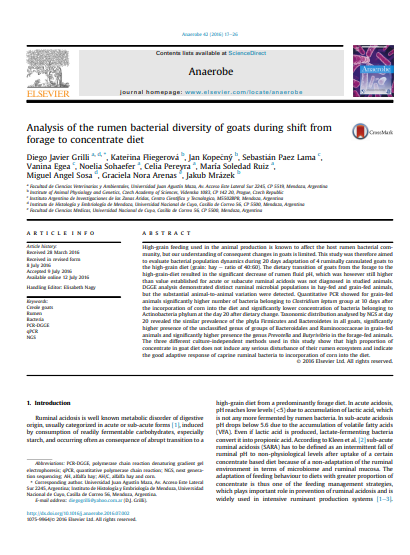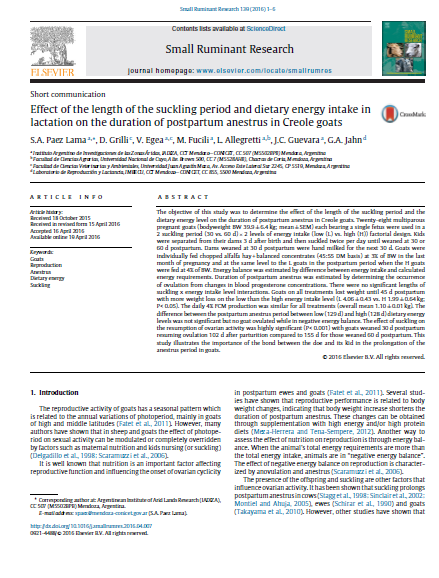Browsing Ciencias veterinarias by Author "Egea, Vanina"
Now showing items 1-2 of 2
-
Analysis of the rumen bacterial diversity of goats during shift from forage to concentrate diet.
Grilli, Diego Javier; Fliegerová, Kateřina; Kopečný, Jan; Paez Lama, Sebastián; Egea, Vanina; Sohaefer, Noelia; Pereyra, Celia; Ruiz, María Soledad; Sosa, Miguel Angel; Arenas, Graciela Nora; Mrázek, Jakub (Comité editor Journal Anaerobe, 2016-07-12)High-grain feeding used in the animal production is known to affect the host rumen bacterial community, but our understanding of consequent changes in goats is limited. This study was therefore aimed to evaluate bacterial population dynamics during 20 days adaptation of 4 ruminally cannulated goats to the high-grain diet (grain: hay e ratio of 40:60). The dietary transition of goats from the forage to the high-grain-diet resulted in the significant decrease of rumen fluid pH, which was however still higher than value established for acute or subacute ruminal acidosis was not diagnosed in studied ... -
Effect of the length of the suckling period and dietary energy intake in lactation on the duration of postpartum anestrus in Creole goats.
Paez Lama, Sebastián Antonio; Grilli, Diego; Egea, Vanina; Fucili, Mercedes; Allegretti, Liliana; Guevara, Juan Carlos; Jahn, Graciela Alma (Comité editorial Small Ruminant Research, 2016-04-16)The objective of this study was to determine the effect of the length of the suckling period and the dietary energy level on the duration of postpartum anestrus in Creole goats. Twenty-eight multiparous pregnant goats (bodyweight BW 39.9 ± 6.4 kg; mean ± SEM) each bearing a single fetus were used in a 2 suckling period (30 vs. 60 d) × 2 levels of energy intake (low (L) vs. high (H)) factorial design. Kids were separated from their dams 3 d after birth and then suckled twice per day until weaned at 30 or 60 d postpartum. Dams weaned at 30 d postpartum were hand milked for the next 30 d. Goats ...











